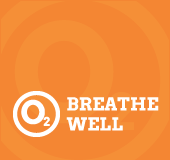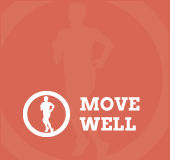Diabetes
Diabetes is a disease in which blood glucose levels are above normal. Most of the food we eat is turned into  glucose, or sugar, for our bodies to use for energy. The pancreas, an organ that lies near the stomach, makes a hormone called insulin to help glucose get into the cells of our bodies. When you have diabetes, your body either doesn't make enough insulin or can't use its own insulin as well as it should. This causes sugar to build up in your blood.
glucose, or sugar, for our bodies to use for energy. The pancreas, an organ that lies near the stomach, makes a hormone called insulin to help glucose get into the cells of our bodies. When you have diabetes, your body either doesn't make enough insulin or can't use its own insulin as well as it should. This causes sugar to build up in your blood.
Types of Diabetes
- Pre-diabetes - Prediabetes is a condition when your blood glucose is higher than normal but not high enough to be diagnosed with diabetes. This condition puts you at risk for developing Type 2 diabetes.
- Type 1 diabetes was previously called insulin-dependent diabetes mellitus (IDDM) or juvenile-onset diabetes. It is usually caused by an auto-immune reaction where the body’s defense system attacks the cells that produce insulin.
- Type 2 diabetes was previously called non-insulin-dependent diabetes mellitus (NIDDM) or adult-onset diabetes. This is the most common type of diabetes. In Type 2 diabetes, there may be insulin resistance and/or insulin deficiency. This type of diabetes can go undetected for many years and is usually found when a complication appears or as a result of a routine blood or urine glucose test.
- Gestational diabetes - a type of diabetes that only pregnant women get. If not treated, it can cause problems for mothers and babies. Gestational diabetes develops in 2% to 10% of all pregnancies but usually disappears when a pregnancy is over.
- Other specific types of diabetes can result from specific genetic syndromes, surgery, drugs, malnutrition, infections, and other illnesses.
Risk Factors for Diabetes
- Being overweight or obese
- Having a parent, brother, or sister with diabetes
- Being of African American, American Indian, Asian American, Pacific Islander, or Hispanic American/Latino heritage
- Having a prior history of gestational diabetes or birth of at least one baby weighing more than 9 pounds
- Having high blood pressure measuring 140/90 or higher
- Having abnormal cholesterol with HDL ("good") cholesterol 35 or lower, or triglyceride level 250 or higher
- Being physically inactive—exercising fewer than three times a week
Are you at risk? Take the American Diabetes Association's Risk Test to learn more.
Signs and Symptoms
Early detection and treatment of diabetes can decrease the risk of developing the complications of diabetes. The following symptoms of diabetes are typical:
- Urinating often
- Feeling very thirsty
- Feeling very hungry - even though you are eating
- Extreme fatigue
- Blurry vision
- Cuts/bruises that are slow to heal
- Weight loss - even though you are eating more (type 1)
- Tingling, pain, or numbness in the hands/feet (type 2)
- Very dry skin
Prevention
You can prevent or delay the onset of type 2 diabetes through a healthy lifestyle.
- Change your diet - Eat Well
- Increase your level of physical activity - Move Well
- Maintain a healthy weight
Staying Healthy with Diabetes
- Measure your blood pressure
- Check your feet for sores at every doctor visit, and get a thorough foot exam at least once a year
- Have a hemoglobin A1C test at least twice a year, to determine what your average blood glucose level was for the past 2 to 3 months
- Test your urine and blood to check your kidney function at least once a year
- Test your blood lipids (fats) – total cholesterol; LDL, or low-density lipoprotein (“bad” cholesterol); HDL, or high-density lipoprotein (“good” cholesterol); and triglycerides at least once a year
- Get a dental checkup twice a year
- Get a dilated eye exam once a year
- Get an annual flu shot and a pneumonia shot
Resources
- American Diabetes Association
- Centers for Disease Control and Prevention (CDC)
- National Institute of Diabetes and Digestive and Kidney Diseases
- National Diabetes Prevention Program
Sources: American Diabetes Association, Centers for Disease Control and Prevention, South Dakota Department of Health Work Well Toolkit





















